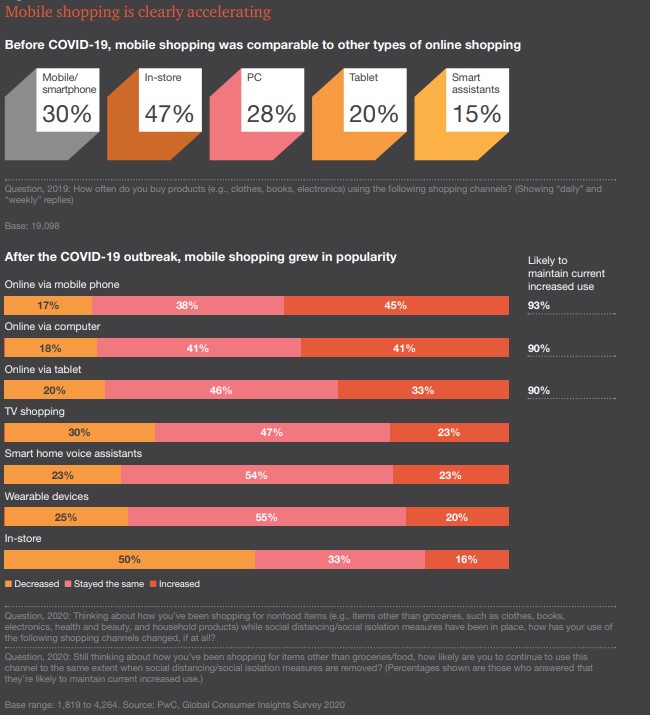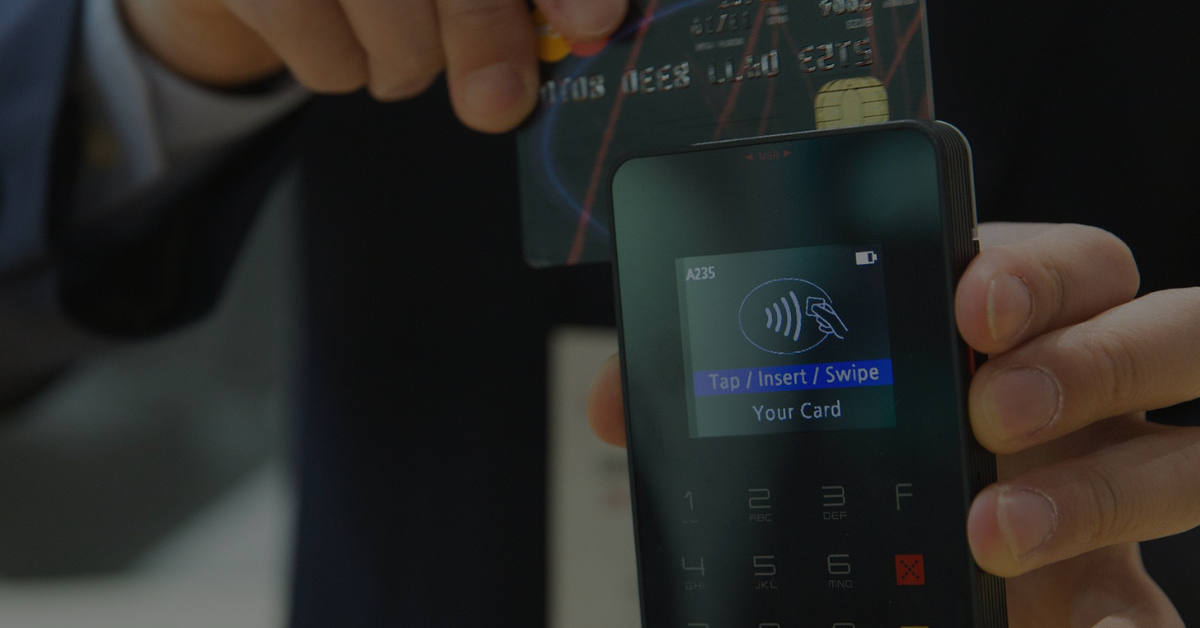The coronavirus pandemic has not only accelerated the pace of innovation but is rapidly evolving human behavior. From our daily habits to how we communicate, learn, and socialize, humans have adapted to our new circumstances.
Mobile shopping has increased by 93% and will likely continue it’s increased use.
PwC Global Consumer Insights Survey 2020
All of these lifestyle changes have impacted our buying habits and consumption patterns. Adjustments in routines that at first were temporary are bleeding into the new normal. B2C companies big and small need to examine their current customer journey, recalibrate for the right now and continue to evaluate and align.
ASSESS MARKET STATUS
According to a recent PwC global consumer insights survey, 40% of global consumers have experienced a drop in income due to job loss. When asked about their situation, 18% said they experienced a decrease in their income and an increase in household bills. Low on funds and staying home, people are spending more on groceries, at-home entertainment, and home projects.
What this means: Financial uncertainty means buying habits will be volatile; price and value will become paramount.
To address these issues, companies should:
- Identify what your shoppers value the most and decide which products and services you can offer that fall into those categories. Create a minimum viable basket or package built with those core items.
- Align your production, supply chain, marketing, and promotions to new value item strategy.
- Survey customers and find out how their priorities have changed regarding price and value.
- Based upon new consumer data, consider new pricing strategies and loyalty programs that support a digital lifestyle to drive and maintain engagement.
UNDERSTAND CUSTOMER EXPECTATIONS
Even as states lift lockdowns and open restaurants, people in cities are opting to play it safe. Safety, security, and healthcare are now a top priority for shoppers. As a result, people have adapted quickly to life at home; social media has increased by 50%; people are going out less, watching t.v. more and have shifted to attending virtual experiences.
Why this matters:
Customers need to feel that their safety is your top priority and are looking for companies that can be on-demand, at any location.
- Ways to prioritize safety for guests and employees:
- Provide workers with personal protective equipment
- Routinely communicate with customers about safety updates, policy changes, and identify which trusted health authority you are sourcing your guidelines from, such as the Centers for Disease Control in the US.
- Provide digital fitness training so that managers and employees can reach customers online.
- Implement mobile contact tracing for employees.
- Be creative, build a team dedicated to testing, and rolling out new digital or at-home customer experience opportunities.
IDENTIFY CURRENT TOOLS OF ENGAGEMENT
Mobile is king, pre-COVID-19, mobile shopping was comparable to other types of online shopping, but now mobile shopping has increased by 93% and will likely continue it’s increased use. Online grocery shopping has also experienced a massive jump in popularity as 63% are buying more groceries online/by phone than before social distancing. Customers’ most frequent activity is spent on video or messaging apps and social media.
What this means for you:
- Knowing that mobile is king lets you know that you will need to balance your customer experience between digital and traditional format.
- The surge in online grocery shopping means that customers are willing to experiment with new channels. Review your current customer touchpoints and see how you can modify them to deliver a pandemic friendly experience.
- People spend more time on devices, which equals to customers needing faster connectivity. Use this as an opportunity to take advantage of new networks like 5G.
What you can do:
- Start with research, look for digitals tools that can help customers make a confident decision, such as digital sizing, virtual shoppers, and virtual collaboration tools.
- List out customer segments and prioritize what most affects them individually during their decision-making process then brainstorm digital approaches.
- Work on building strategic partnerships across your industry focus on direct-to-consumer platforms.
- Improve digital thread, invest data and technology management, and segment audiences to deliver seamless in-store and online experiences.
- Identify opportunities and challenges that will arise with new technology integrations and the popularity of new online shopping habits.
- Upskill staff to deliver post-worthy experiences and so they can better understand the end-to-end customer journey.

REINFORCE CUSTOMER LOYALTY
A happy customer always comes back. Life at work and home is stressful enough, find out what you can do to relieve some of the current burden people are most likely feeling right now. The economic and social pressures of a global pandemic combined with extra time have customers focused on self-care and social issues important to them. Customers are looking for brands with purpose, let your customers know you care about them and what you do to give back.
How this affects the business:
- By aligning with your customer’s values like self-care, well-being, and innovation, you create a loyal customer and brand advocate.
- Customer expectations are that brands are making sustainable, ethical choices; they want to see a people-first approach rather than a prioritization of shareholders.
- This new breed of consumer is looking for innovative solutions that can solve traditional pain points.
- By focusing on building a culture of innovation, you will improve your business agility and resiliency to change.
How to get started:
- Research the capabilities and digital tools to solve traditional consumer pain points and recruit the needed talent.
- Invest in R&D to develop new, sustainable products and services that align with market research.
- Work directly with stakeholders such as NGOs, the media, trade associations, and academia, to exchange knowledge and experiment.
- Exercise and encourage inclusivity and transparency across supply chains
- Find new supply chain partners that suit shifting consumer demands
The pace of change and industry disruption is rapidly evolving and will reveal those organizations who can change with it.
Resources: PwC Global Consumer Insights Survey 2020
